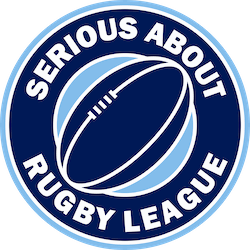
With the new IMG grading released and League 1 sides Newcastle Thunders and London Skolars potentially going bust, it is time to restructure the leagues in Rugby League.
There are currently three tiers in the professional Rugby League pyramid: Betfred Super League, Betfred Championship and Betfred League One. The Betfred Super League consists of 12 teams, the Championship has 14 teams, while ten teams compete in League One.
In the Super League and Championship, each team plays 27 games. Super League teams play each other home and away, and all teams descend on a neutral venue to play one game over the ‘Magic Weekend’ with an additional 4 ‘loop fixtures’ decided by league positions.
‘Magic Weekend ‘primarily aims to boost interest in the sport; on average, attendance reach well over 30,000.
The Championship follows suit with a similar weekend called the ‘Summer Bash’ and while the top team in the Super League and Championship wins a shield, the big prize is decided by the Play-Offs and Grand Final, thus keeping the excitement alive for more clubs and their supporters throughout the season.
In League One, teams play each other twice with the winners gaining automatic promotion and the second promotion spot is decided after Play Offs for clubs from 2nd to 6th place.
Newcastle Thunder have had a difficult season, finishing bottom of the Championship, relegated to League One and likely to go bust as a result. With London Skolars finishing bottom of League One and going bust themselves, this leaves only eight viable teams in League One.
There have been talks about restructuring the leagues in the future to try and make them more competitive and help keep all clubs stable financially, with RFL CEO Tony Sutton speaking to clubs from the Championship and League One today as part of maintaining open dialogue.
To this end, Media giants, IMG, were tasked with creating a grading system to rank all Rugby League clubs that would incentivise clubs to grow their fanbase, engage more with fans, increase their revenue, invest in the sport in a sustainable manner, and ensure there is strong governance and leadership at each club.
The overall aim is to ensure that Rugby League is run in a “best of class way” and the plan is to introduce the rankings in 2025.But will this just result in the big clubs becoming stronger and the weaker clubs going to the wall?
There are problems with the IMG grades and rankings. Super League status is dependent on fandom, performance, finances, stadium, and catchment. These criteria make it harder for smaller clubs to break into the Super League. London Broncos, for instance, triumphed in the Championship Play-Offs, yet are ranked 24 th by IMG and below League One side Doncaster. They won their Super League place on merit but look set to lose this status in 2025.
Similarly, North Wales Crusaders were one win away from clinching promotion to the Championship yet are ranked 35 th out of 35!
However, this situation also presents an ideal opportunity to revamp the whole league structure and hopefully make the Rugby League more competitive and popular.
One of the options is to increase the Super League to 14 teams and create a combined Championship and League One of 20 teams.
While there could be more promotion places available, this option may be difficult to manage with too many fixtures and without the excitement of the play-offs.
The alternative to this is to divide the 20 teams in the Championship into east and west conferences with the top teams in each going into a play-off. This would retain the excitement of the play-offs.
One flaw would be that the East and West boundaries will have to be redrawn at the start of every season depending on which teams got relegated or promoted.
One way of keeping a three-tier system is to potentially allow Wigan, Saints and Leeds Reserves to fill the holes in League One. This will help keep the three-tier system in place and help Wigan, Saints and Leeds develop their players to play at a higher level.
The problem with this idea is that it doesn’t solve the issue of smaller clubs going bust and dropping out of the League altogether. In effect, it could benefit the big clubs more, because they can develop their own players, thereby extending the gap in quality between them and the smaller clubs.
14 teams in the Super League will benefit Rugby league as there will be more teams competing at the top level and more games for fans to invest in and enjoy. Two spots for relegation would make the Super League more exciting at both ends of the table.
There needs to be more movement between the three leagues and so more opportunities for relegation and promotion. For example, The Championship should have two promotions, with the top spot getting an automatic promotion and a playoff place between 2nd and 5th place.
There was no doubt last season that Featherstone Rovers were the best team in the League winning 25 out of the 27 games played. But as only one team can be promoted, Featherstone had to compete in a playoff against the top five teams. This then led to them losing out to promotion to London Broncos, who finished fifth.
Now that the Broncos are in the League, many fans predict they will go straight down. However, if Featherstone had been promoted, there is an argument that they would have competed in the Super League, as they were by far the best team in the Championship.
There is a need to spread investment across all three divisions to keep clubs alive. There is a risk of losing more clubs, which would be a massive blow to their communities. Similarly, the sport should not just rely on one owner revitalising the club, for example, Derek Beaumont, at Leigh Leopards, when there are other options like Salford Red Devils who are promoting fan ownership.
A final option is to expand the Super League to 14 teams, cut the Championship to 12 and increase League One to 12, including four reserves teams from the bigger clubs. This would not only develop the reserve players but also enable clubs in that League to sign better players and boost the quality of the teams. The presence of reserve teams also makes League One a much more competitive environment.
How this would look is very interesting based on the release of IMG’s preliminary grading, and again it would sadly forego London.
Super League would comprise of the seven Grade A teams, namely and in order of grading, Leeds Rhinos, Wigan Warriors, St Helens, Catalans Dragons, Warrington Wolves, Hull KR and Hull FC.
The seven best Grade B teams, all of whom scored more than 12 points on their preliminary grades would then make up the final seven teams.
These would be Salford Red Devils, Huddersfield Giants, Toulouse Olympique, Wakefield Trinity, Leigh Leopards, Castleford Tigers and Bradford Bulls.
A 12 team Championship comprising last season’s league leaders Featherstone Rovers as the marquee side would be very competitive.
Traditional teams such as Widnes would mix with newer sides like York and of course London, with current IMG proposals seeing the teams ranking from 15th to 27th (excluding Newcastle) creating their own division.
That would mean that the Championship was almost exclusively Grade B teams with just Oldham, Swinton and Dewsbury sneaking in.
It would in turn create a League One of 12 teams, the eight remaining professional teams and the four highest placed Super League team’s academies.
That would be a reward for the Super League teams but also create a diverse League One with teams from the heartlands mixing with Cornwall, Midlands and North Wales.
That could then see promotion and relegation become more viable as the Super League academies would be capped in League One, meaning the eight other sides have a more viable chance of promotion.
Regardless, for Rugby League it is important that the fate of clubs is ultimately decided on the pitch and not by an IMG algorithm. The sport would be energised with more teams being promoted or relegated to give clubs that are struggling the opportunity of a gateway into the Super League.




























